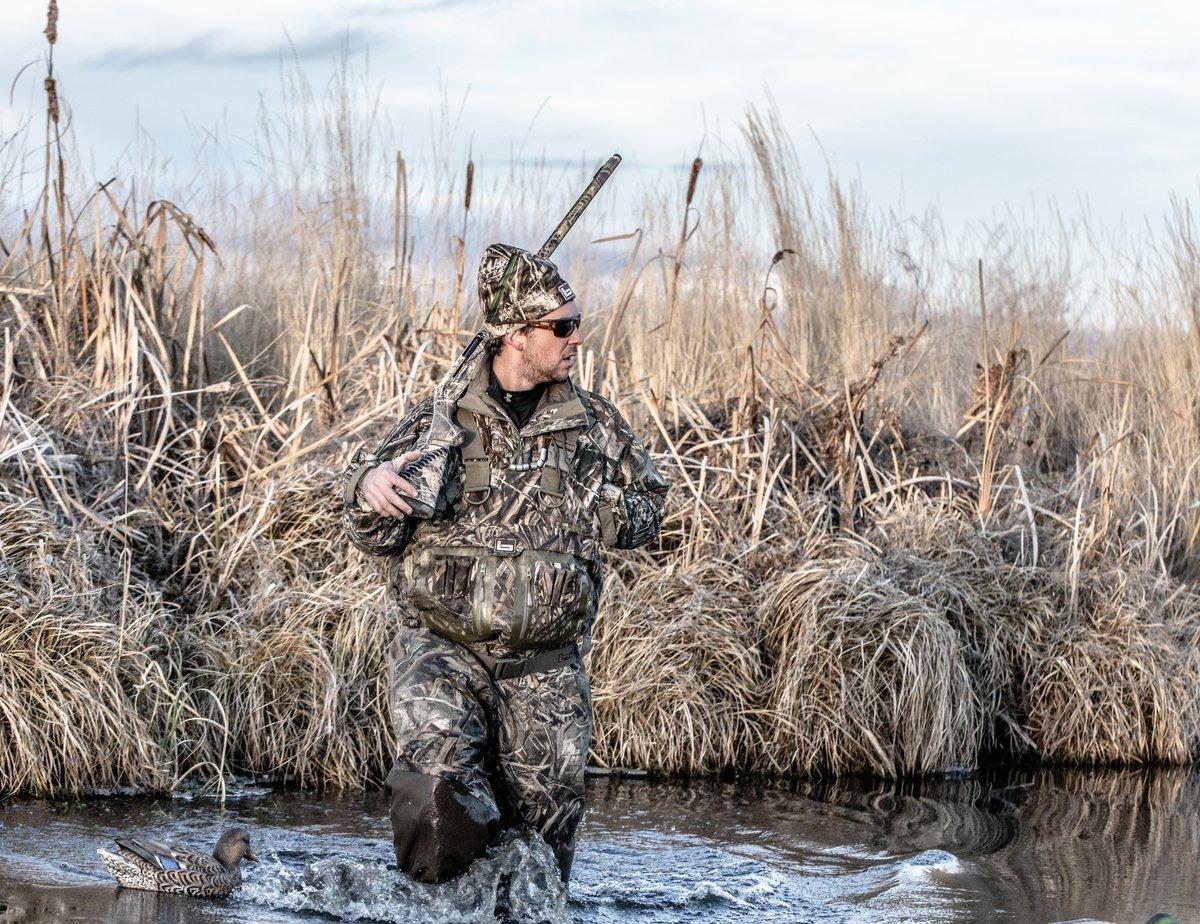You didn't touch your shotgun all summer, and now duck season is here. What do you do?
You jolt awake, soaked with sweat and still reeling from the dream. A flock of mallards had parachuted into your decoys, seemingly hovering in the breeze at 20 yards and begging for steel. Yet as you emptied your shotgun, nothing fell. You didn't cut a feather.
I didn't shoot at all this off-season, you think. What can I do?
Don't panic. You can still sharpen your wingshooting skills before the game gets real. Here's how.
Practice the Mount
Many hunters miss ducks because they don't shoulder their guns correctly. Establishing a quick, accurate sight picture with a solid pre-mount and mount is the essential starting point of a good shot. You can practice that at home without firing your gun.
Start with your shotgun — unloaded and pointed in a safe direction, of course — at port arms. Pick out an object to represent a target. Stand with your feet at shoulder width apart, and place more weight on your front foot. Point your left foot at the object (assuming you're a righty), and focus your eyes there. Then, in one quick, smooth motion, raise the shotgun, touch the comb to your cheek, plant the butt firmly into your shoulder and move the gun to the target. Your eyes should remain focused on the target, not the bead or rib. Repeat this several times per day so the motion becomes second nature. Also, try it from a sitting position to simulate rising from your blind seat and getting on target.
Picture Success
Here's another at-home exercise. Imagine a moving target, such as a streaking redhead or flushing wood duck. Then, go through your pre-mount/mount motion, and envision how you'll shoot the bird. Swing through the target aggressively, picture yourself slapping the trigger, and follow through in one smooth motion. (Again, only do this with an unloaded gun, and don't actually dry-fire the weapon.) Positive visualization really helps. Further, your mind's eye will refer to sight pictures from previous successful shots. No, this exercise isn't as helpful as shooting real targets, but it at least gets you thinking about various shots you'll encounter.
Stay Tried and True
Every waterfowler loves to try out new guns and loads. Just don't do that when your skills might not be especially sharp. When in doubt, go with your favorite shotgun and top load. Maybe that old auto-loader fits you better than your new pump or double. Perhaps you seem to kill more ducks with 1-1/4-ounce loads of steel No. 3s compared to fancier options. Whatever the case, use your fallback setup. When you haven't practiced much, unfamiliar guns and loads can result in consistent misses and regrettable language.
Go Clubbing
Come on, almost anyone can get in some wingshooting practice before the season. Get down to the local club, introduce yourself to fellow hunters, and shoot a round or two. Even if your scores suck, you'll still be better prepared for the season. Heck, even hand-throwing a few clays with buddies on the Back 40 helps. Better, find a dove field, and burn some ammo, or head to a preserve and shoot a few quail or pheasants. If nothing else, you'll become more familiar with your shotgun and recognize your weaknesses.
Start Fresh
Whatever happens, don't make the same mistake twice. Get out and shoot more next off-season. It's fun, and it always helps your field performance. Plus, it might let you practice your excuses. Those come in handy every fall, whether you've practiced a lot or not.
Click here for more Realtree waterfowl content. And check us out on Facebook.







